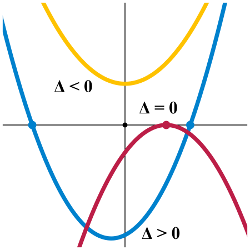Quadratic equation calculator
Quadratic equation has the basic form: ax2+bx+c=0
Calculation:
Solution in text:
0.5h2-25h+168=0 ... quadratic equationDiscriminant:
D = b2 - 4ac = 289
D > 0 ... The equation has two distinct real roots
h1 = 42
h2 = 8
P = {42; 8}
